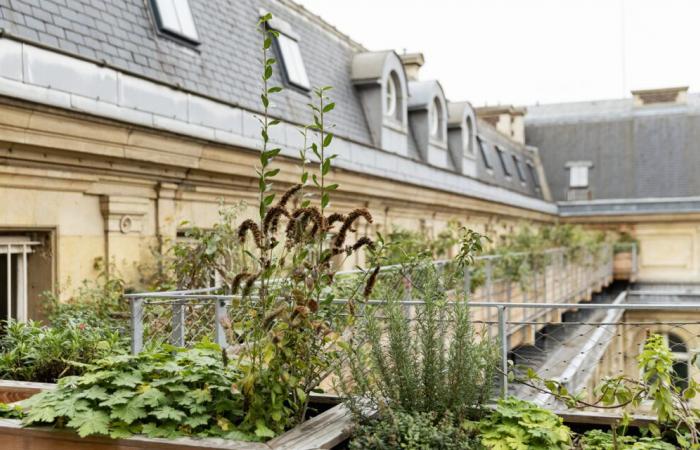The project was launched at the Climate Academy (4th) last spring by Roofscapes, a start-up which creates wooden platforms that can be used to cover zinc roofs, which generate high heat. And the results are impressive.
100 square meters of green roof
Recognizable at a glance, the zinc roofs of the capital today evoke much more than the Parisian panorama and the Aristocats. During heatwaves, they are synonymous with an amplification of heat, because they retain it, making the lives of the inhabitants of Haussmann buildings unbearable. Roofscapes offers an alternative: covering these roofs with green spaces.
The idea is inspired by projects already carried out in Zurich and Venice. At the Climate Academy, they transformed their vision into reality: 100 m² of roof was transformed into a wooden platform, including plant boxes and sensors to measure the temperature and observe the effects of heat.
Up to 40 degrees difference!
Today, the fight against climate change is not limited only to soils. The horizontal space of Paris is 38% covered by roofs, excluding Bois de Vincennes and Bois de Boulogne. This is a significant space and therefore potentially exploitable.
In addition, zinc is a material that is poorly suited to high heat. A zinc surface in the sun can reach 80°C during heatwaves of 40°C. The overheating created by these zinc roofs contributes to increasing the overall heat of cities. At building level, heat is dispersed in the attic and overheats the top of the buildings. In this experiment carried out by Roofscapes, it is therefore a question of covering them.
The studies carried out by the three architects behind the start-up made it possible to measure the impact of this innovation. On July 30, 2024, the mercury reached 35.8°C at 5:21 p.m. in Paris. On the zinc below the wooden platform, the temperature reached 35.7°C, while on the unprotected part the figure was 67.6°C.
Below the zinc, the observation was similar: the platform helps reduce heat. The temperature measured under the protected zinc was 29.7°C, compared to 47°C under the unprotected surface.
Promote water conservation
On these platforms, the start-up offers to first install plant containers for the purpose of greening. These are designed with a self-irrigation system. Rainwater is captured and stored at the bottom of the tanks. Clay balls then feed the plants. It is a solution that promotes water conservation during periods of extreme heat.
Ultimately, these spaces could also take on other functions: relaxation areas, terraces and common areas for residents of the buildings concerned. The possibilities are numerous.
Combining innovation and resilience
This project responds to several facets of Parisian resilience in a low-tech way (i.e. by implementing simple, sustainable and energy-efficient technologies). As a first step, the idea is to transform the current passive role of roofs into an active role in the fight against climate change.
It is also a first step towards the democratization of access to roofs, which therefore have social potential. The creation of green spaces, far from the streets and sheltered from noise, can also help preserve and support Parisian biodiversity. A great example of the association between innovation and resilience.






